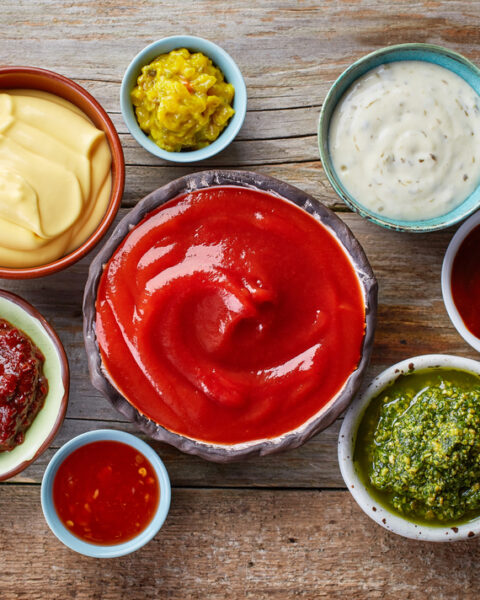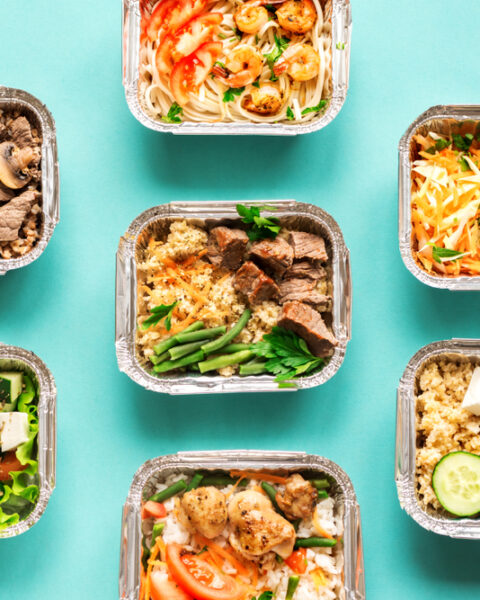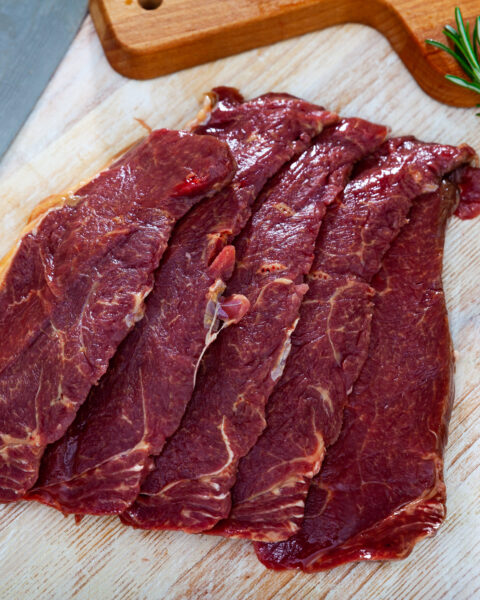Talking about food is always fun, especially when you discover that the same foods have different names in different parts of the world. The U.K. has a unique twist on what many of us might call everyday foods. Imagine going to the U.K. and ordering some “chips” only to be surprised with what you’d call “French fries.” It’s these little quirks that make exploring British cuisine so fascinating. Here’s a list of foods you didn’t know had different names in the U.K., and it’s a fun way to see how language and culture intertwine to create delicious confusion. Enjoy this tasty tour of culinary name swaps!
Contents
- 1 Eggplant (U.S.) / Aubergine (U.K.)
- 2 Zucchini (U.S.) / Courgette (U.K.)
- 3 Cilantro (U.S.) / Coriander (U.K.)
- 4 Cookie (U.S.) / Biscuit (U.K.)
- 5 French Fries (U.S.) / Chips (U.K.)
- 6 Potato Chips (U.S.) / Crisps (U.K.)
- 7 Arugula (U.S.) / Rocket (U.K.)
- 8 Shrimp (U.S.) / Prawn (U.K.)
- 9 Jelly (U.S.) / Jam (U.K.)
- 10 Cotton Candy (U.S.) / Candyfloss (U.K.)
- 11 Ground Beef (U.S.) / Mince (U.K.)
- 12 Popsicle (U.S.) / Ice Lolly (U.K.)
- 13 More From RetailShout
- 14 10 Simple Tricks to Keep Dairy Products Fresh Longer
- 15 20 Best Trader Joe’s Products for a Perfect Cheese and Charcuterie Board
Eggplant (U.S.) / Aubergine (U.K.)

In the United States, this deep purple vegetable is called “eggplant,” while in the United Kingdom, it is known as “aubergine.” The name “aubergine” is derived from the French word for the vegetable, reflecting the UK’s historical culinary influences. It is a versatile ingredient commonly used in dishes like ratatouille and moussaka. Aubergines are rich in fiber and antioxidants, making them a healthy addition to many recipes. They are often grilled, roasted, or used as a meat substitute in vegetarian dishes. The flesh of the aubergine becomes tender and creamy when cooked, absorbing flavors from other ingredients beautifully.
Zucchini (U.S.) / Courgette (U.K.)

Known as “zucchini” in the United States, this summer squash is called “courgette” in the United Kingdom. The term “courgette” comes from French, while “zucchini” has Italian origins, reflecting the culinary traditions of each country. Courgettes are popular in various cuisines for their mild flavor and versatility. They can be eaten raw, cooked, or even spiralized into noodles. Courgettes are low in calories but high in vitamins A and C, making them a nutritious choice. They are commonly used in salads, stir-fries, and baked goods like zucchini bread. Their delicate texture and flavor make them a favorite in summer dishes.
Cilantro (U.S.) / Coriander (U.K.)

In the United States, the fresh leaves of the Coriandrum sativum plant are called “cilantro,” while in the United Kingdom, both the leaves and the seeds are referred to as “coriander.” This herb is known for its distinct, slightly citrusy flavor. Cilantro/coriander is widely used in various cuisines, including Mexican, Indian, and Middle Eastern dishes. The leaves are often added to salsas, curries, and salads for a burst of freshness. Coriander seeds, on the other hand, have a warm, spicy flavor and are used as a spice in cooking. This herb is rich in antioxidants and has several health benefits.
Cookie (U.S.) / Biscuit (U.K.)

What Americans call a “cookie” is known as a “biscuit” in the United Kingdom. However, in the U.K., a “biscuit” can refer to a broader category of baked goods, often crisp and crumbly. The American “cookie” is typically soft and chewy, often containing chocolate chips or other add-ins. British biscuits include varieties like digestive biscuits, rich tea biscuits, and shortbread. Biscuits are a staple in British tea culture, often enjoyed with a cup of tea. The difference in terminology can be confusing for travelers but highlights the rich diversity in English-speaking countries’ culinary traditions.
French Fries (U.S.) / Chips (U.K.)
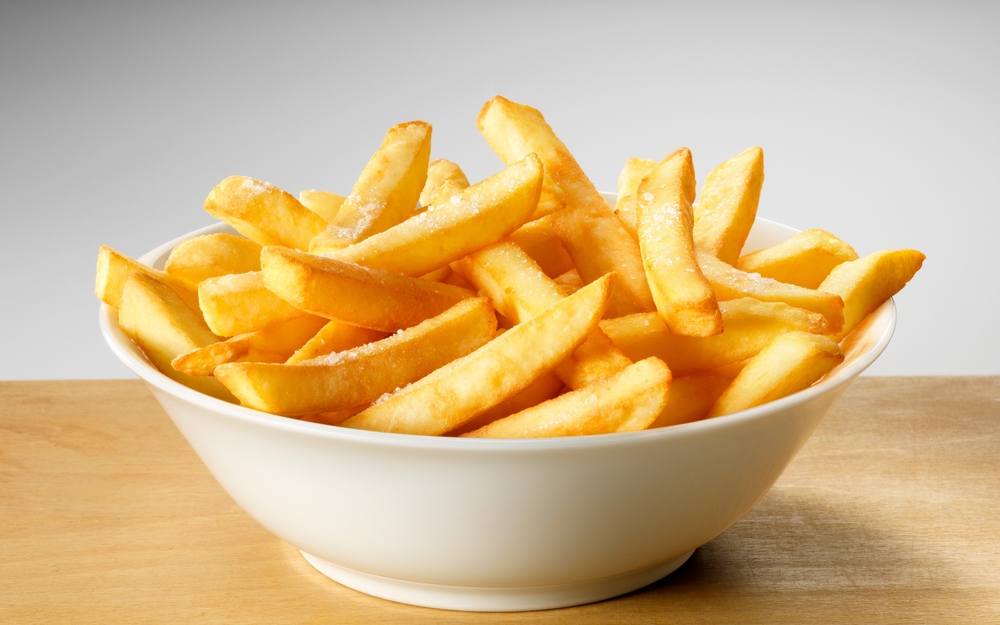
In the United States, deep-fried potato strips are called “French fries,” whereas in the United Kingdom, they are known as “chips.” British chips are usually thicker than American fries and are often served with fish in the classic dish “fish and chips.” The term “French fries” is believed to have originated from American soldiers in World War I who encountered the fried potatoes in Belgium, where French was the official language of the army. In the U.K., “chips” are a beloved comfort food, frequently enjoyed with salt and vinegar. The distinction in names reflects the cultural significance of this popular side dish.
Potato Chips (U.S.) / Crisps (U.K.)

The thin, crispy snacks Americans call “potato chips” are referred to as “crisps” in the United Kingdom. The term “chips” in the U.K. is reserved for what Americans call “French fries.” Crisps come in a wide variety of flavors in the U.K., from classic salted to more adventurous options like prawn cocktail and smoky bacon. They are a popular snack food, often enjoyed in lunchboxes or as part of a meal deal. The difference in terminology highlights the unique snack cultures in each country. British crisps are known for their quality and the wide range of flavors available.
Arugula (U.S.) / Rocket (U.K.)

In the United States, the peppery green leaf often found in salads is called “arugula,” while in the United Kingdom, it is known as “rocket.” The name “rocket” comes from the French word “roquette,” reflecting its European origins. Arugula/rocket is prized for its distinctive, spicy flavor and is often used in salads, pizzas, and pasta dishes. It is a rich source of vitamins A, C, and K, as well as calcium and potassium. This leafy green adds a peppery kick to dishes, making it a popular choice for adding depth of flavor. Its health benefits and culinary versatility make it a favorite among chefs and home cooks alike.
Shrimp (U.S.) / Prawn (U.K.)

In the United States, small shellfish are typically called “shrimp,” whereas in the United Kingdom, they are often referred to as “prawns.” The terms can sometimes be used interchangeably, but generally, “prawn” in the U.K. refers to larger varieties of these crustaceans. Prawns are a popular ingredient in British cuisine, found in dishes like prawn cocktail and prawn curry. They are a good source of protein, vitamins, and minerals, making them a healthy choice. The distinction in names reflects slight differences in species and size. Prawns are versatile and can be grilled, boiled, or used in salads and pastas.
Jelly (U.S.) / Jam (U.K.)

What Americans call “jelly” is referred to as “jam” in the United Kingdom. In the U.K., “jelly” specifically refers to a gelatin-based dessert, similar to what Americans call “Jell-O.” British jam is a spread made from fruit and sugar, used on bread, scones, and other baked goods. The distinction can be confusing for travelers but highlights the cultural differences in naming conventions. Jam is a staple in British teatime traditions, often served with clotted cream on scones. The rich, fruity flavors of jam make it a beloved addition to breakfast and teatime.
Cotton Candy (U.S.) / Candyfloss (U.K.)
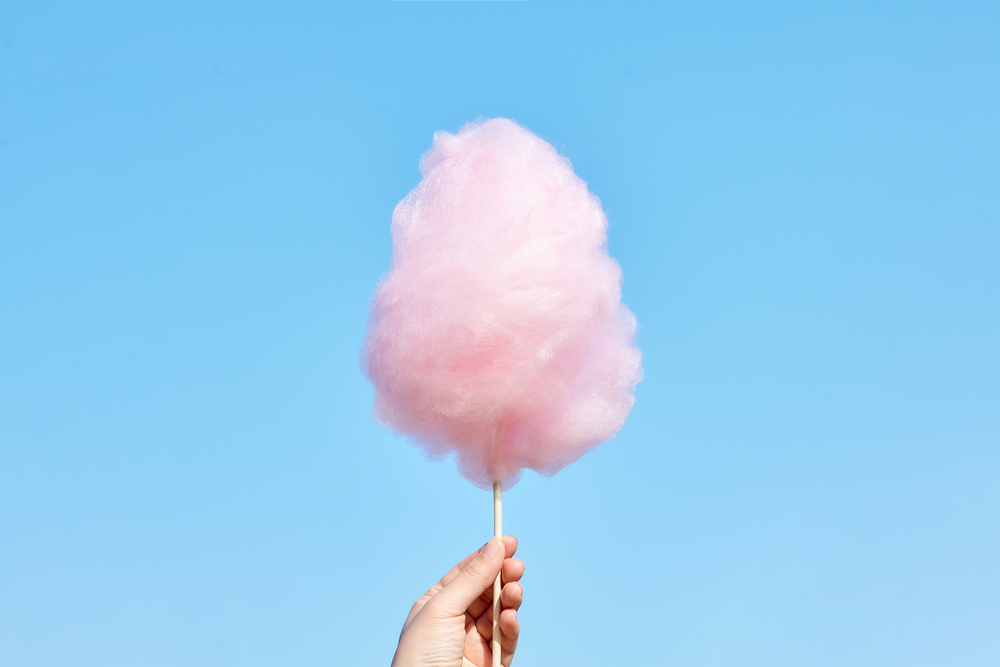
In the United States, the fluffy, spun-sugar treat sold at fairs and carnivals is known as “cotton candy,” while in the United Kingdom, it is called “candyfloss.” The name “candyfloss” reflects the delicate, thread-like appearance of the sweet treat. Candyfloss is a popular treat at British fairs, amusement parks, and festivals. It is made by heating and liquefying sugar, which is then spun through tiny holes to create thin strands of sugar that collect on a stick. The whimsical, airy nature of candyfloss makes it a favorite among children and adults alike. Its bright colors and sweet taste evoke a sense of nostalgia and fun.
Ground Beef (U.S.) / Mince (U.K.)
In the United States, finely chopped beef is called “ground beef,” whereas in the United Kingdom, it is referred to as “mince” or “minced beef.” Mince is a staple in many British dishes, including shepherd’s pie, spaghetti Bolognese, and mince pies. It is a versatile ingredient, used in a variety of recipes from different cuisines. Ground beef/mince is typically made from trimmings of beef cuts and has a higher fat content than other types of meat. It is a good source of protein, iron, and other essential nutrients. The difference in names reflects the culinary traditions and popular dishes in each country.
Popsicle (U.S.) / Ice Lolly (U.K.)
In the United States, frozen treats on a stick are called “popsicles,” while in the United Kingdom, they are known as “ice lollies.” Ice lollies come in various flavors and shapes, popular during the summer months for their refreshing qualities. The term “popsicle” is actually a brand name that has become a generic term in the U.S., similar to how “Hoover” is used for vacuum cleaners in the U.K. Ice lollies are a favorite among children and are often found in a wide range of fruity and creamy flavors. The simple pleasure of enjoying an ice lolly on a hot day is a universal experience, despite the difference in names.
This article originally appeared on RetailShout
More From RetailShout
15 Foods You Should Skip for Better Joint Health

Taking care of your joints is crucial for maintaining mobility and reducing discomfort. Surprisingly, what you eat plays a significant role in joint health. Certain foods can exacerbate inflammation and worsen joint pain, making it essential to be mindful of your diet. Read More.
10 Simple Tricks to Keep Dairy Products Fresh Longer

Keeping your dairy products fresh for longer can save you money and reduce waste. We’ve all experienced the disappointment of discovering spoiled milk or moldy cheese in the fridge. Luckily, there are simple tricks to extend the shelf life of your favorite dairy items. Read More.
20 Best Trader Joe’s Products for a Perfect Cheese and Charcuterie Board

When it comes to building a charcuterie board, the right selection of cheeses can make all the difference. Trader Joe’s is known for its high-quality, unique cheeses that bring variety and flavor to any gathering. Whether you’re looking for something rich and creamy or bold and spicy, this list highlights the best options to make your cheese board shine. Read More.

